CASTANETS
 |
| http://www.tocscastanyoles.com/historia.htm |
WHAT ARE CASTANETS?
The word castanet comes from castaina, the Spanish word for chestnut.
They are shell-shaped clappers hinged together with string and were originally played by a Spanish dancers who, holding a pair in each hand, used them to produce rhythmic patterns of sound to accompany their dance movements holds a pair in each hand.
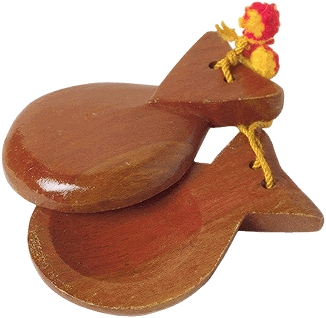
INFORMATION FROM:
http://www.carmendevicente.com/castanet.html
The castanets are a centuries-old, percussion instrument whose earliest recorded history dates to over 1000 B.C. and whose origin is attributed to the Phoenicians, a culture imminently commercial , who thrived in the countries surrounding the basin of the Mediterranean: Greece, Turkey, Italy, and Spain.

However, over the course of history, it has been Spain that has conserved and developed their use and as such, the castanets are considered the cultural patrimony of Spain (they are considered the national instrument of the country). Thus, the castanets are usually used with the music that gives aSpanish color and character to that music.

However, over the course of history, it has been Spain that has conserved and developed their use and as such, the castanets are considered the cultural patrimony of Spain (they are considered the national instrument of the country). Thus, the castanets are usually used with the music that gives a
The castanets consist of two pairs of shallow, cup-shaped, pieces of special wood, usually chestnut (castana), although other woods and materials have been used in more contemporary times. Each pair is drilled to receive an ornamental cord, which is looped round the thumb. The pairs usually differ slightly in pitch; the lower is called macho (male ) and the higher hembra (female). The higher-sounding pair is usually held in the right hand. The cups hang downwards and are manipulated by the fingers. Each instrument is handcrafted and molded to fit the size of hand of its professional user.
But this Spanish style of castanet-playing is rarely used by an orchestra in modern scores, not only because they are difficult to use and master BUT because there are less than four professional castanet players in the world. Rather, at times, two pairs of orchestral castanets are used, or alternatively a “castanet machine,”

in which the cups are secured by elastic to a central piece of wood ending
in a handle which is held and shaken.
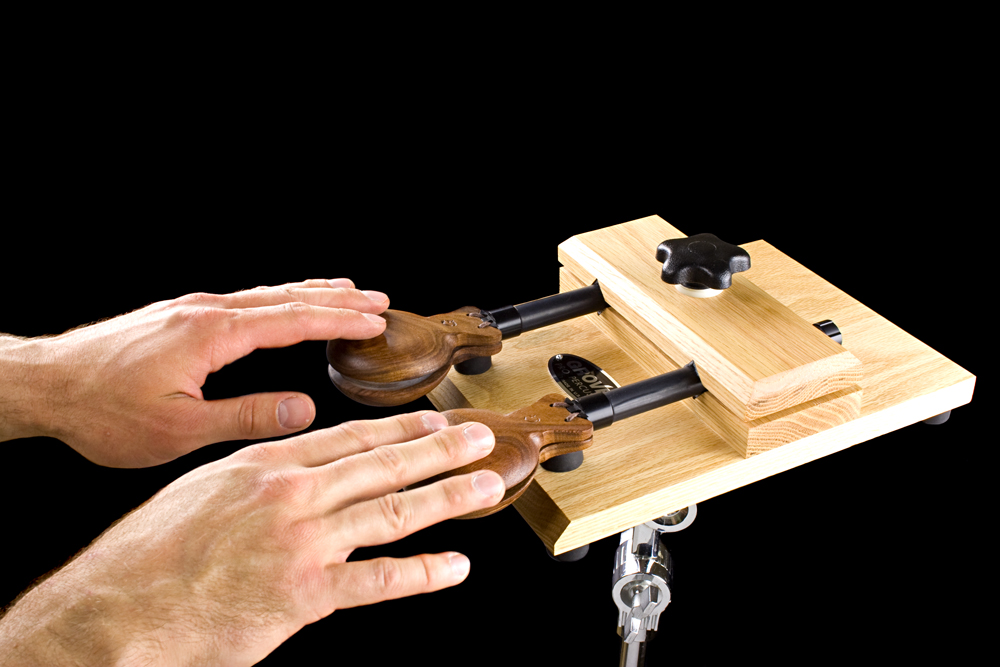

in which the cups are secured by elastic to a central piece of wood ending
in a handle which is held and shaken.

Above is another version.
Castanets are usually employed in music (to give that Spanish character)
such as Bizet’s Carmen,
https://www.youtube.com/watch?v=eTjm9zuV1YQ
Chabrier’s rhapsody Espana
and
Massenet’s ballet Le Cid .
Wagner wrote for them in the Venusberg Music in Tannhauser (1861) where they lead in to the abandoned excitement he depicted. They also help to establish the atmosphere of the scene in the Dance of the Seven Veils in Richard Strauss’ Salome. Britten employed them significantly in his Let’s Make an Opera, where they imitate the cry of a night bird. And they are frequently used to support rhythmic structure, as in Prokofiev’s Third Piano Concerto.
The castanets are considered perhaps the most sophisticated of the percussion instruments.
 |
| A Bolero dancerAntonio Cabral Bejarano (1798–1865) |
 |
| Henry Woods: Young Couple Dancing With Castanets, 1876 |
HOW TO PLAY CASTANETS:
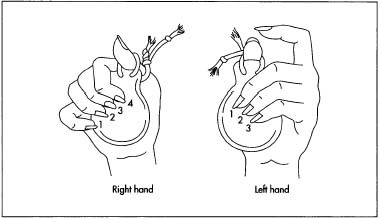 |
| http://www.madehow.com/Volume-5/Castanets.html |
The Castanets
Day I
The Castanets
Day II
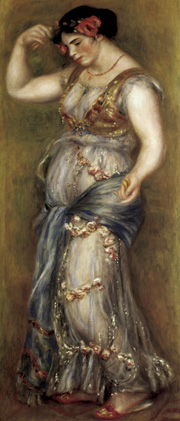 |
| Dancing Girl with Castanets 1909, Pierre-Auguste Renoir |
 |
| http://www.merriam-webster.com/art/dict/castanet.htm |
(because some dancers attach them to their thumb, or pulgar)
and platillos (saucers).

 |
| Ballet Dancers by Delphin Enjolras (Using Castanets) |
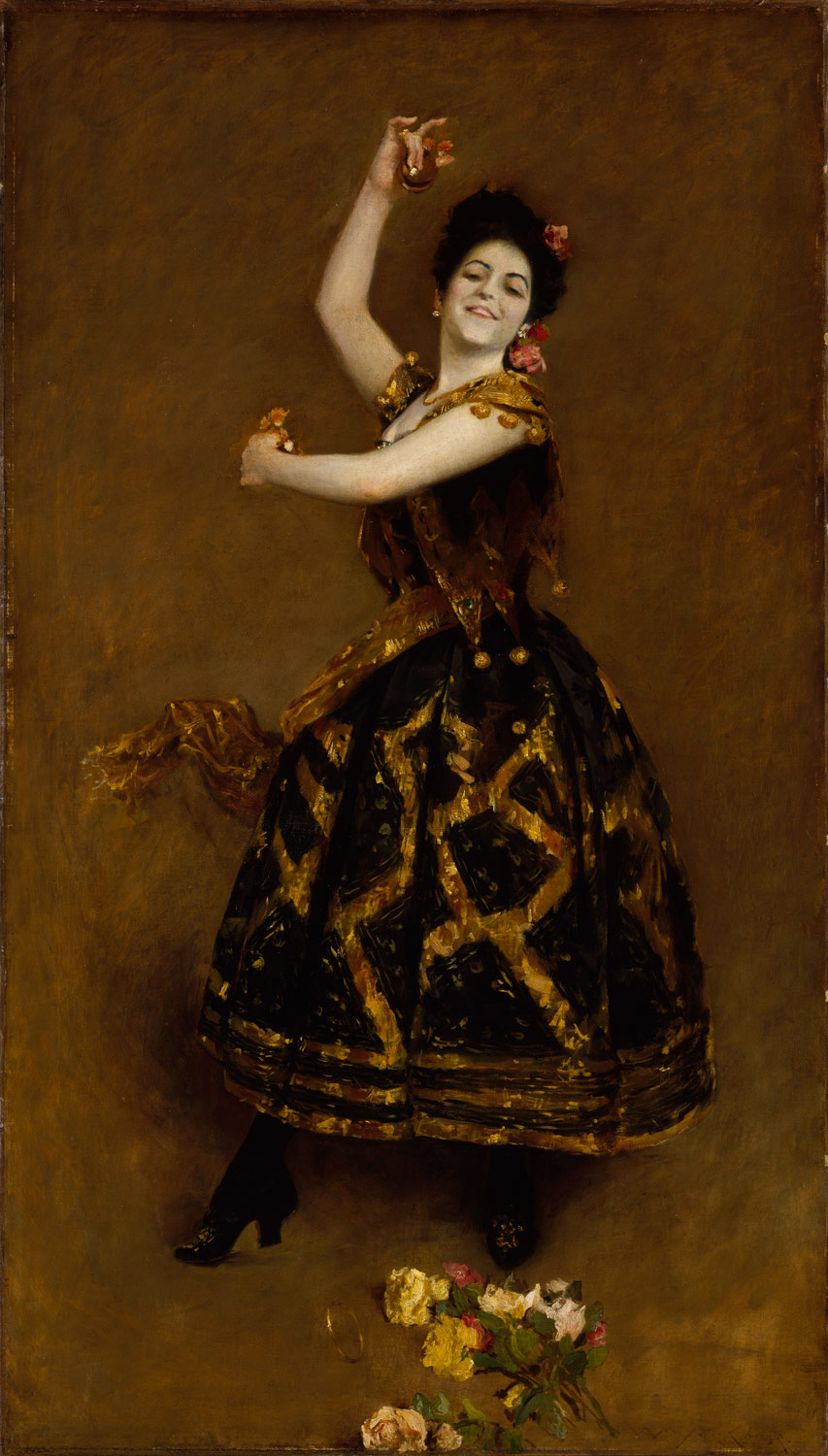 |
| Carmencita, 1890 by William Merritt Chase |
